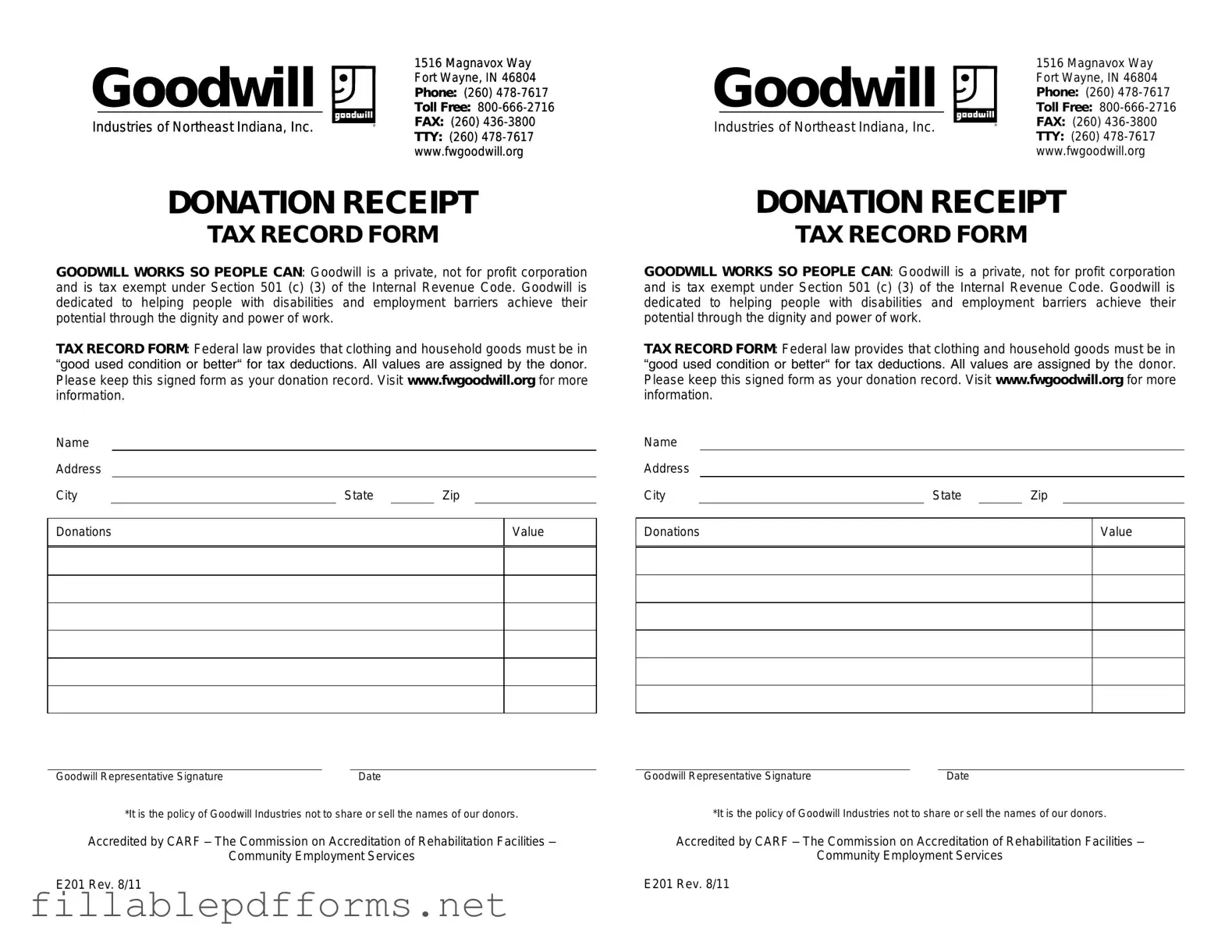Goodwill donation receipt PDF Template
The Goodwill donation receipt form is an important document that acknowledges your contribution to Goodwill Industries. This receipt not only serves as proof of your donation but also helps you keep track of your charitable contributions for tax purposes. Understanding how to properly fill out and utilize this form can enhance your giving experience and ensure you receive the benefits you deserve.
Launch Editor Here
